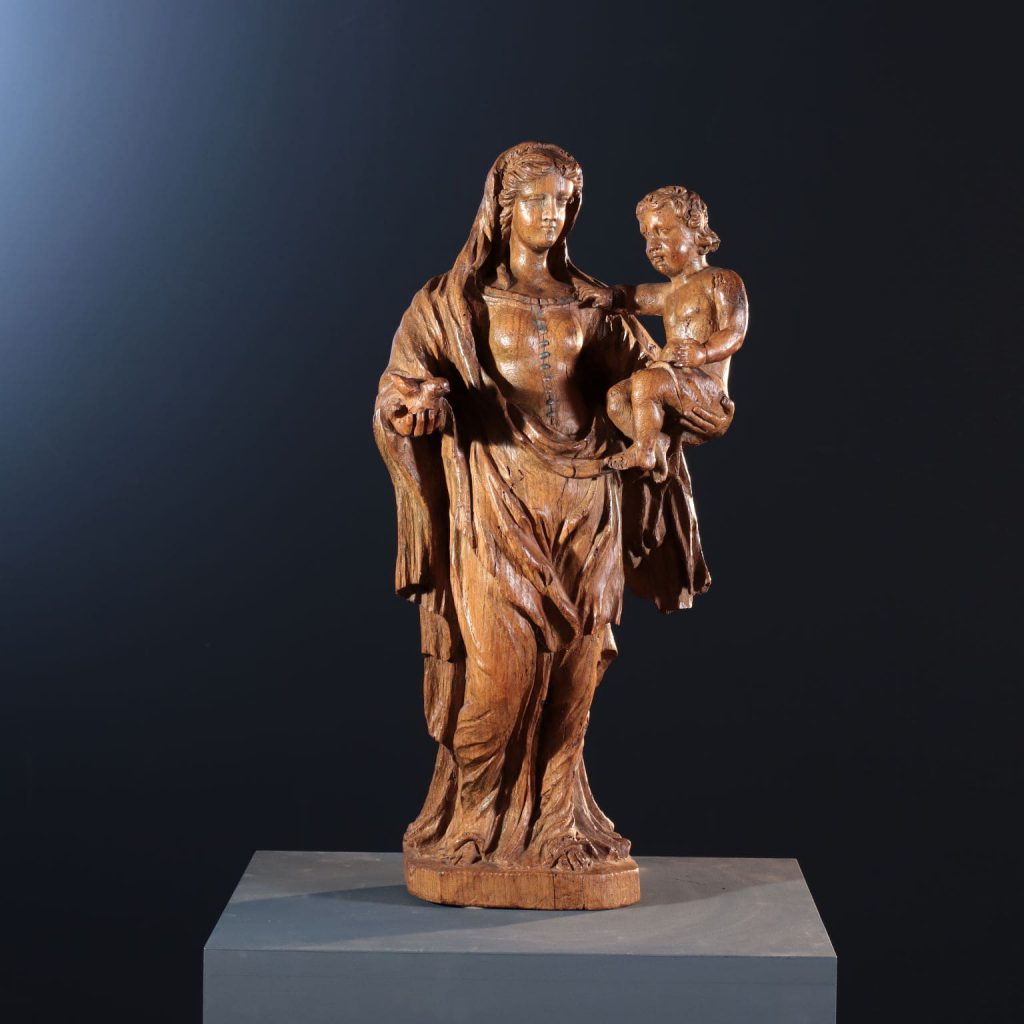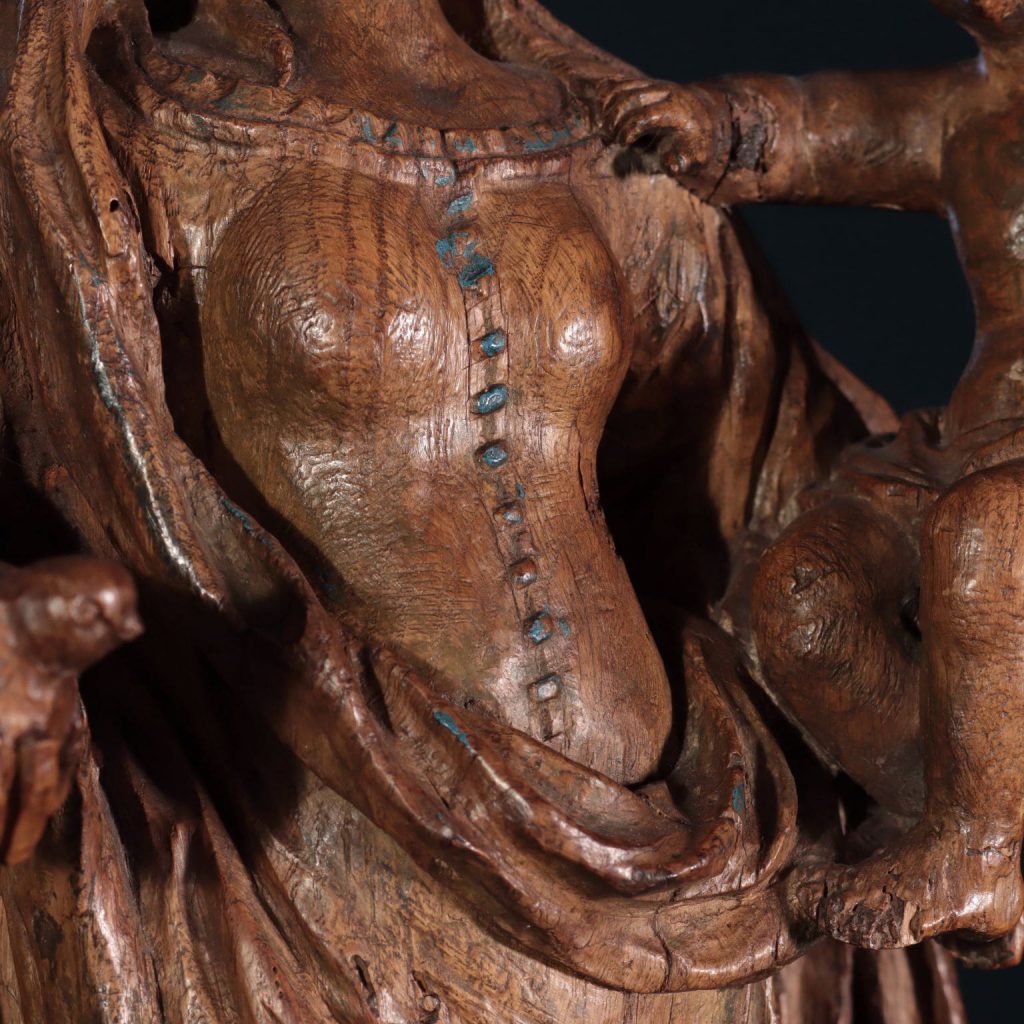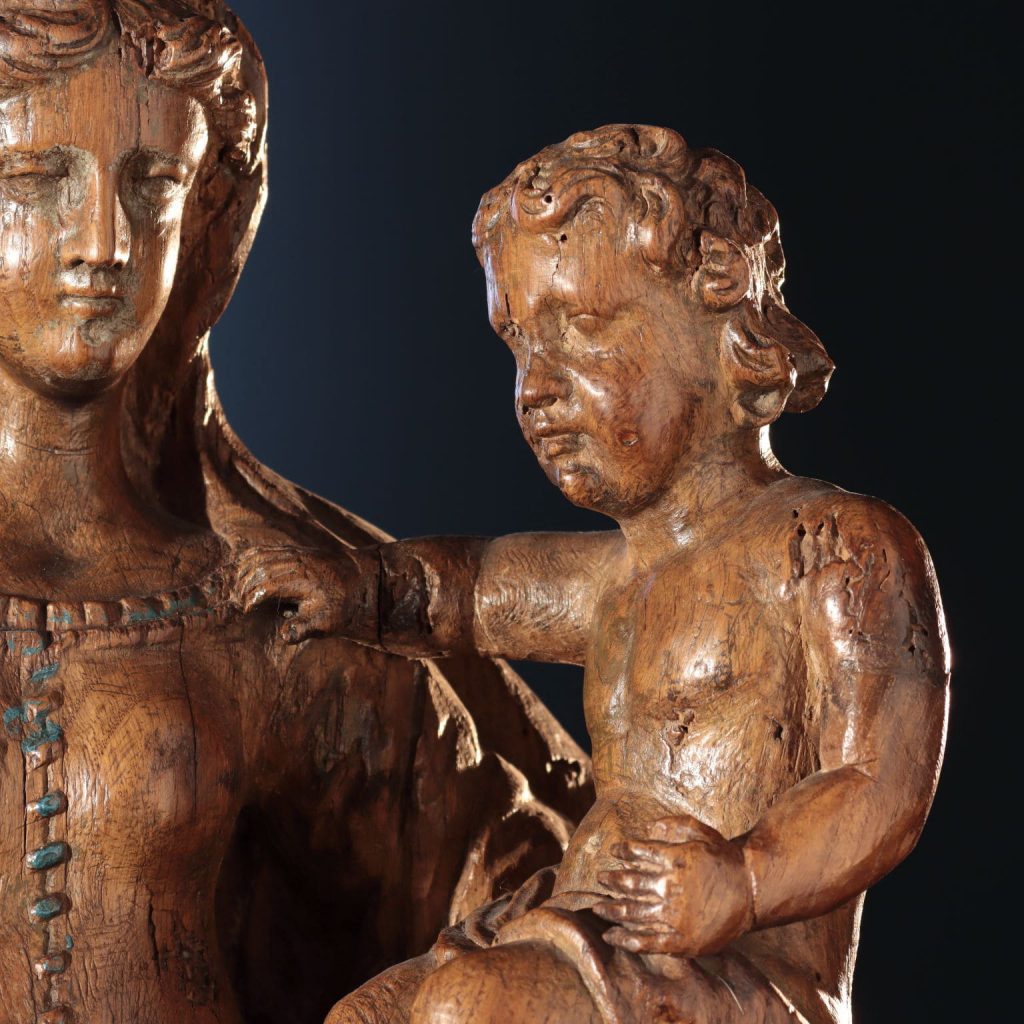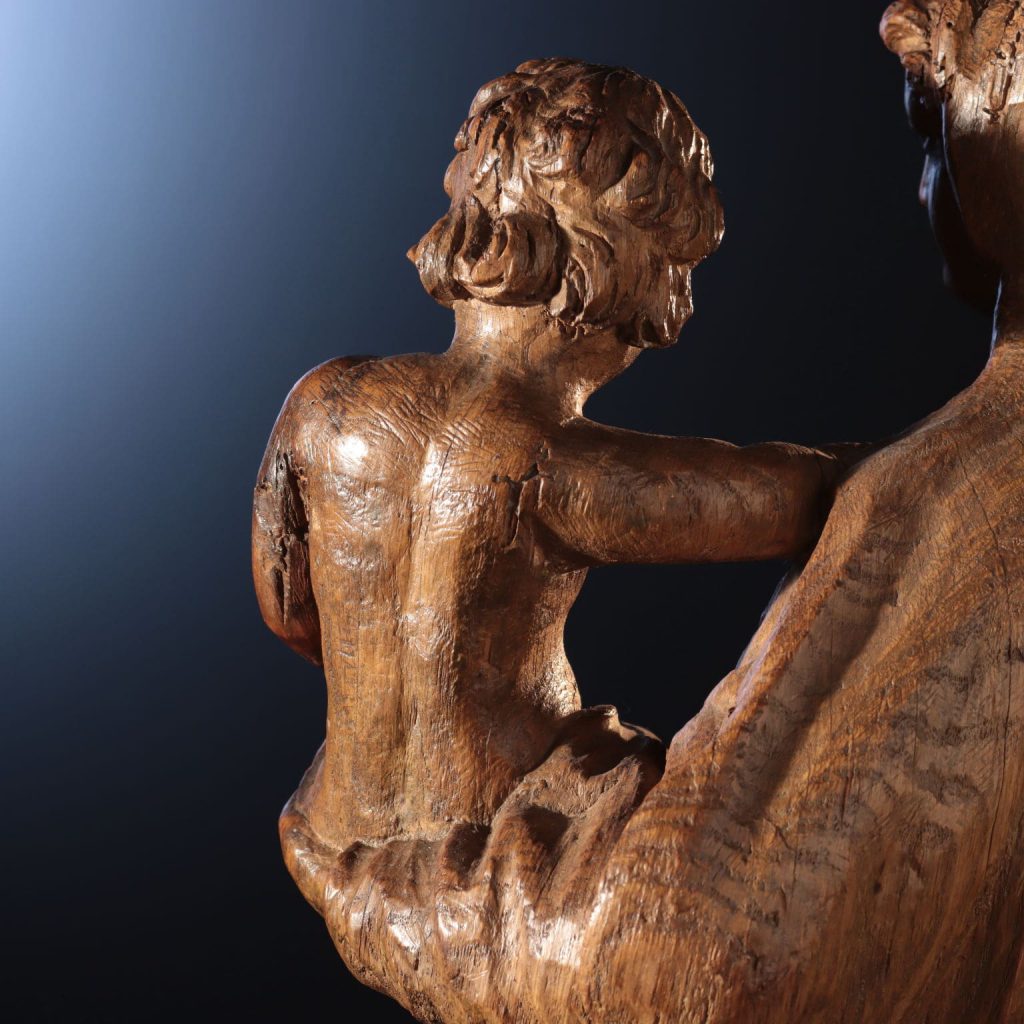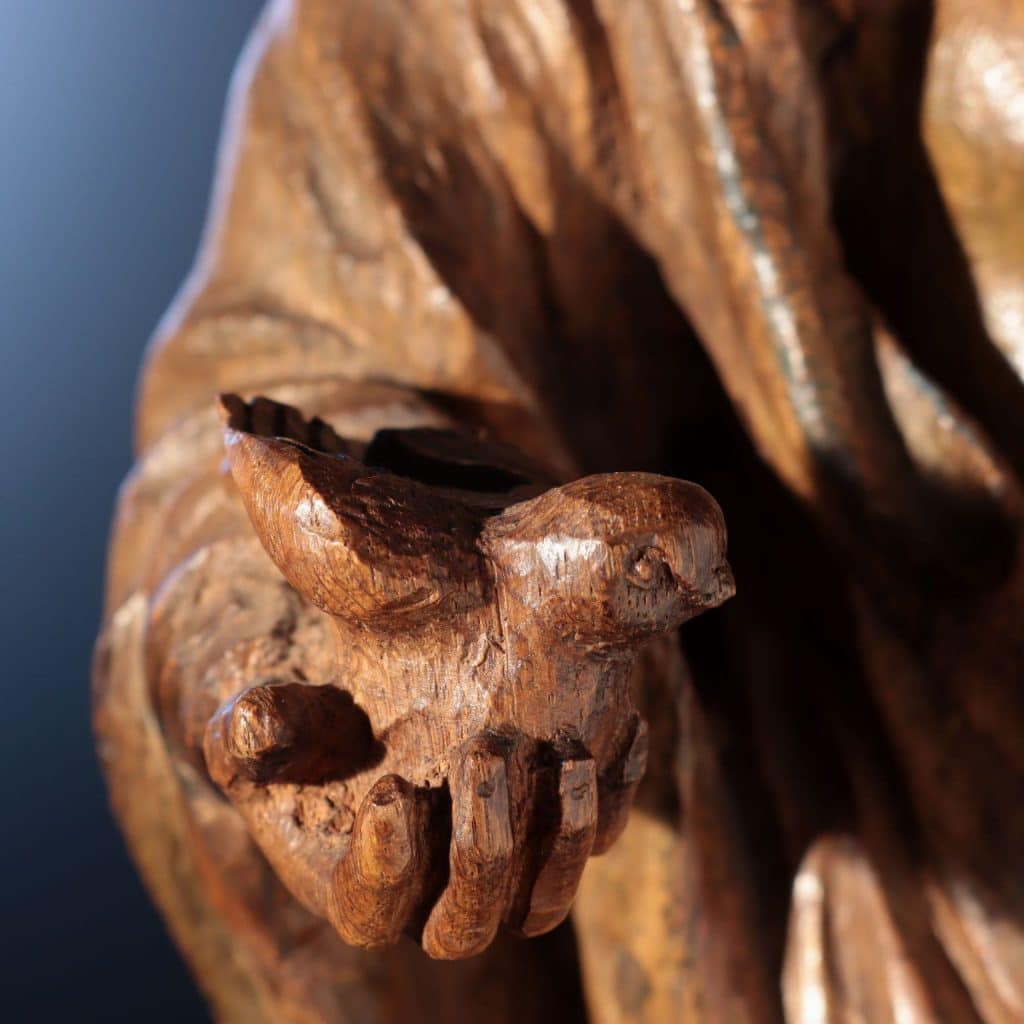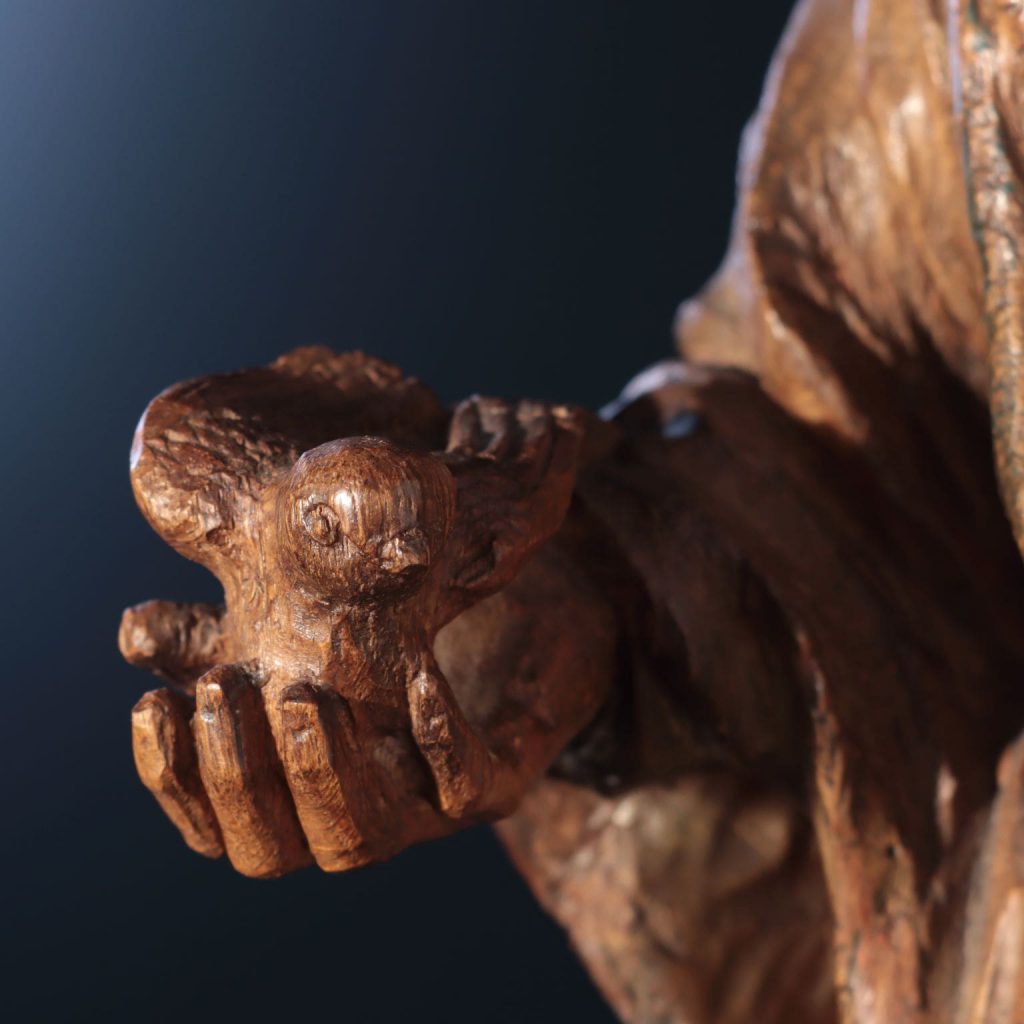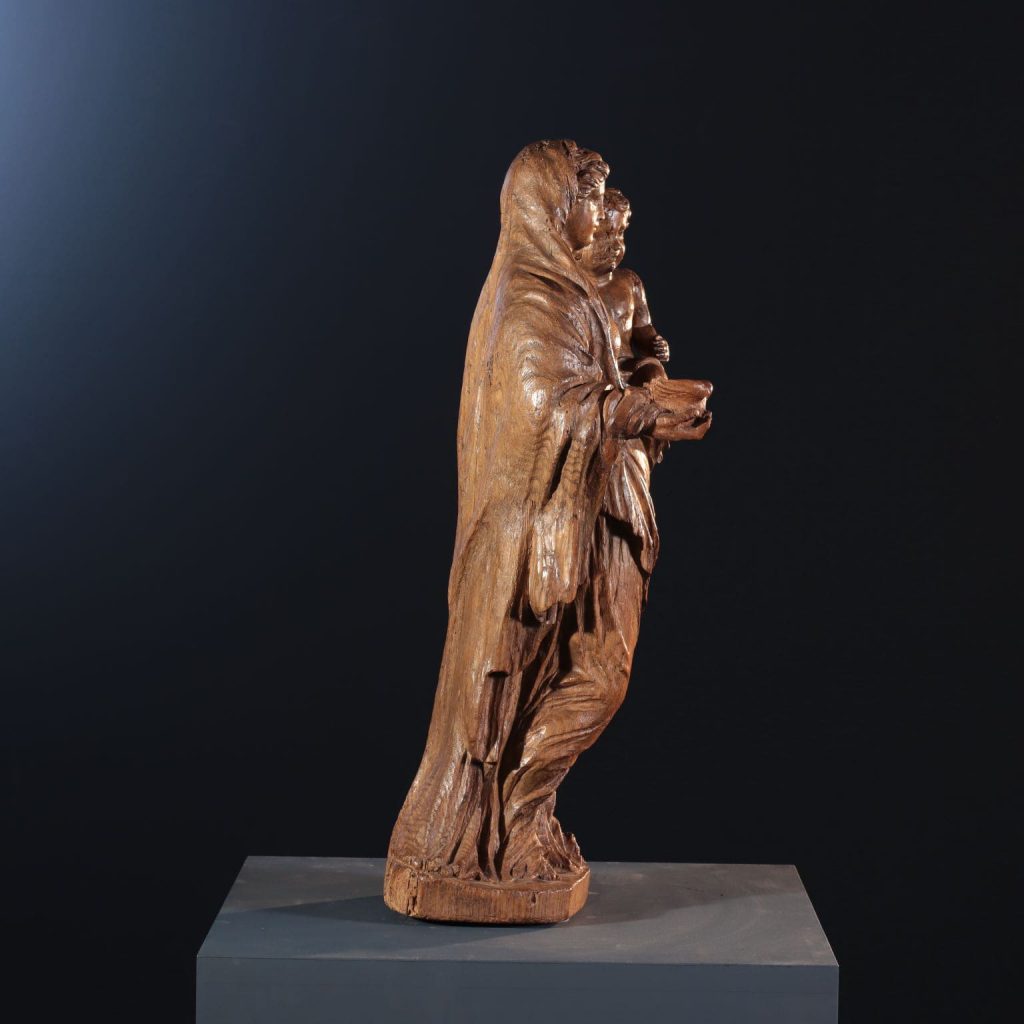Oak wood carving
Description:
Oak wood sculpture depicting the standing Virgin, the weight resting on the left leg, creating a spiral movement with the body. She wears a dress closed on the front by a tight row of buttons, while on the head she wears a long cloak that drapes her shoulders down as well and creates a lively and plastic play of drapery in the lower part. in his left hand a small bird with outstretched wings is placed, while with the opposite arm he holds the Child Jesus, who is supported with his right arm against the body of the Mother. Both figures have a serious and thinking expression on their faces.
There are traces of the ancient polychromy: the cloak was originally red, while the inner part and the underlying robe were cerulean.
Dimensions: 59,5 x 27,5 x 20 cm ( 23,4 x 10,8 x 7,9 in )
CODE: ARARAR0076914
Historical-stylistic analysis:
The sculpture can be placed in the French area, as evidenced by its style and iconography. The meticulous and incisive rendering of the fabrics and the slight evenness that moves the figure of the Virgin are in fact a derivation from the tradition of Gothic statuary from beyond the Alps.
The iconography is also quite particular and refers to French production. In fact, if the representation of the so-called Madonna of the goldfinch is usual and is found, over the centuries, in numerous Italian paintings, it is much more difficult to find it in the sculptural ones.
One of the few examples made by an Italian artist, but with a solution far removed from our work, is the Madonna with Child Enthroned by two clients, a work by Stefano da Putignano dated 1517 and preserved in the Mother Church of San Nicola di Pàtara in Cisternino, where Jesus is intent on playing with a small bird. The goldfinch is in fact a symbol of the Passion, due to the characteristic crimson color that distinguishes the plumage of the head which, according to tradition, was obtained by getting dirty with blood, in an attempt to extract a thorn from the crown on Christ’s head. for this reason, in the artistic tradition, it is usually depicted as an attribute of the Child Jesus, who holds him tightly in his hands, as a symbolic prefiguration of his own tragic destiny.
Certainly less known and widespread is the iconography of the Madonna and Child in which the small bird is held no longer by the son, but by the mother. This type of representation seems to refer to the late Gothic French production. In fact, a stone example is known, preserved at the Bargello Museum in Florence, dating back to the second half of the fourteenth century and which can be placed in this geographical area. Although certainly later, our sculpture seems to come from a cultural and artistic environment similar to this one, in which this iconography was used.
Although the back of the sculpture is finished, the plastic rendering of the drapery seems more subdued than the front. This detail suggests that its original location was close to a wall or that it was in any case placed on a small altar that favored its frontal use.
- Madonna of the Goldfinch, France, late 16th century

Antiques, Art and Design
FineArt is the new ambitious Di Mano in Mano project that offers an exclusive choice of antiques and design works, presenting them for their singularity and uniqueness.

